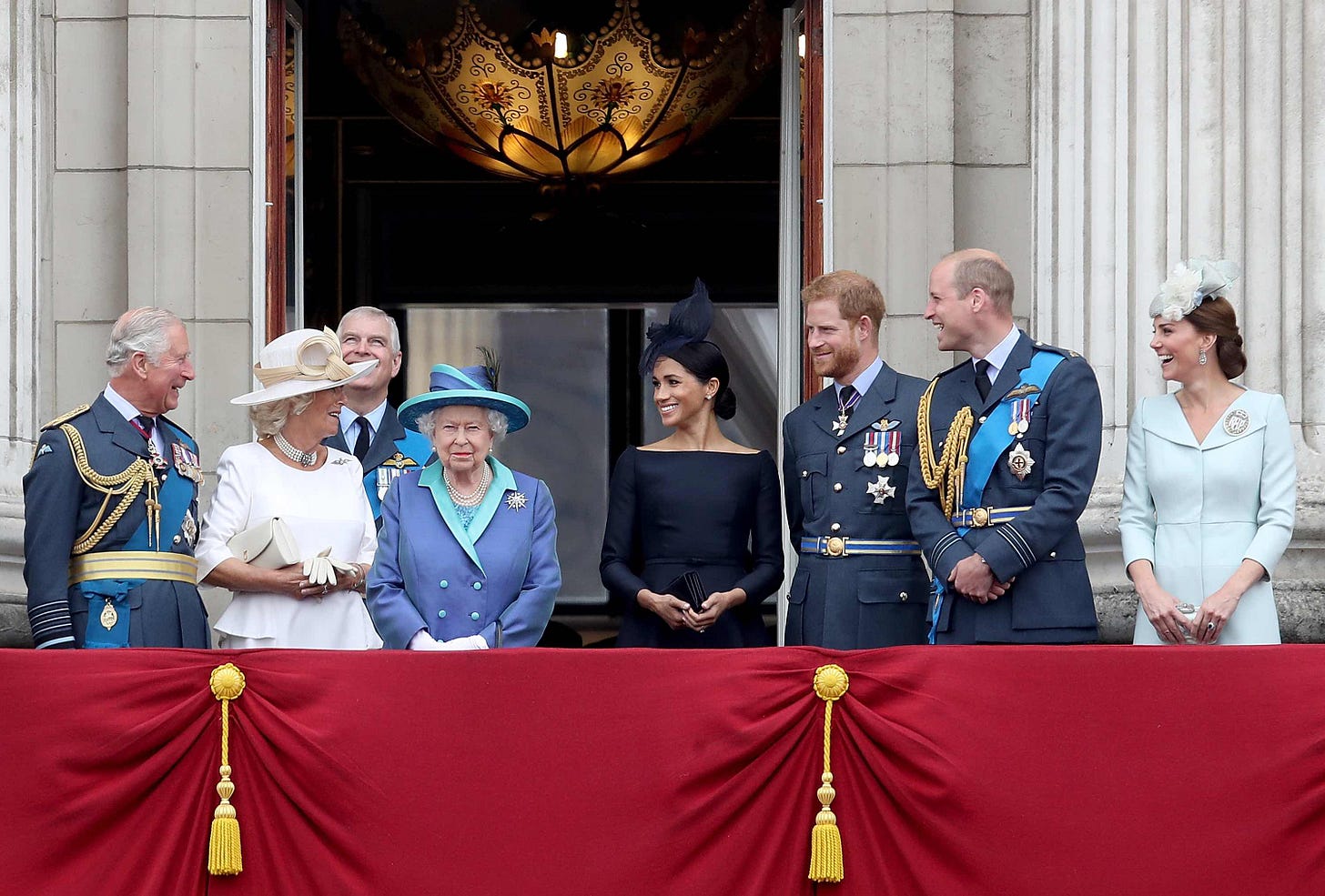Royal Titles, Explained
Answers to your questions about Prince Archie, Princess Lilibet, the new Duke of Edinburgh, and more.

This week, after six months of speculation, Harry and Meghan confirmed that their two children would be henceforth known as Prince Archie and Princess Lilibet. In the wake of the news, my Instagram DMs blew up with questions: Why was there so much speculation around the titles? What took so long to announce them? And why would Harry even want them for his children given his struggles with royal life?
On Friday, there was more title news: King Charles conferred the coveted Duke of Edinburgh title to his brother, Prince Edward, the youngest son of Queen Elizabeth II and Prince Philip. Then came more questions! What is a duke? Who gets to be one? What happened to his the Wessex title and why was his daughter passed over for it?
Below, I’ve made my best attempt to answer all of your queries. What do you think of the flurry of title news? Let me know in the comments or send me an email at Hello@SoManyThoughts.com.
Paid subscribers will be able to read this newsletter in full. THANK YOU for your support, it makes my work possible! Free subscribers, please consider upgrading for $5 a month to read every newsletter as well as gain access to the comments, discussion threads, Spare podcast, upcoming coronation coverage and more. If for any reason you cannot afford a paid subscription, please sign up for a free one first and then send me an email at Hello@SoManyThoughts.com.
What members of the royal family are offered a prince or princess title?
In 1917, King George V issued Letters Patent stating that the title of prince or princess and the use of HRH (His or Her Royal Highness) would be conferred to three groups: 1) the children of the sovereign 2) any male-line grandchildren of the sovereign and 3) the eldest son of the eldest son of the Prince of Wales.
Until the Letters Patent, the styling was used a bit more freely. The 1917 change “limited and redefined royal titles, thus limiting the size of the Royal Family,” according to historian Marlene Koenig (you can read more about the history of the use of the titles at her blog, Royal Musings).
During the reign of Queen Elizabeth II, other family members were offered titles — and not everyone accepted them. It’s complicated. Keep reading!
Why weren’t Archie and Lilibet given these titles when they were born?
Queen Elizabeth was alive at the time of both Archie and Lilibet’s births, making them the great grandchildren of the monarch rather than grandchildren. As such, they were styled at birth as Master Archie Harrison Mountbatten-Windsor and Miss Lilibet Diana Mountbatten-Windsor.
George, Charlotte, and Louis receive prince or princess titles even though they were great grandchildren at the time of their birth. Why is that?
George was entitled to become a prince at birth under the 1917 Letters Patent because he was the eldest son of the eldest son (at the time, William) of the Prince of Wales (at the time, Charles). However, in 2012, before George’s birth, Queen Elizabeth issued new Letters Patent, stating that not just the eldest son but all children of the eldest son of the Prince of Wales would receive a a title. That meant not just George but any children of William and Kate’s, hence Princess Charlotte and Prince Louis.
A similar exception was not made for Harry’s children, which Meghan brought up in the couple’s interview with Oprah Winfrey in March 2021. Recalling when she was pregnant with Archie, she said, “They didn’t want him to be a prince or princess, not knowing what the gender would be, which would be different from protocol.” Here, Meghan misspoke. Based on the 1917 Letters Patent, Harry and Meghan’s children were not entitled to titles until the queen passed away.
Could Queen Elizabeth have solved this by making an exception like she did for Will and Kate? Yes, she could have. So I can see why Harry and Meghan would be upset.
What changed with the Sussexes?
When Queen Elizabeth passed away, Charles became king — which meant that Harry and Meghan’s children became grandchildren from the male line of the sovereign and were now covered by the 1917 Letters Patent.
However, the new titles for Archie and Lilibet were not immediately announced. Despite other updates made to the succession page of the royal family’s website, Archie and Lili’s titles remained “Master Archie Mountbatten-Windsor” and “Miss Lilibet Mountbatten-Windsor.” That prompted a flurry of speculation in the press about whether titles for Archie and Lili were in question now.
Why would there be speculation when they are entitled to them?
Here’s where it gets complicated. Not everyone who is offered a title for their child(ren) accepts it, and some who are not entitled to them are offered them, too. Let’s take a look at the Queen’s eight grandchildren:
Keep reading with a 7-day free trial
Subscribe to So Many Thoughts to keep reading this post and get 7 days of free access to the full post archives.




